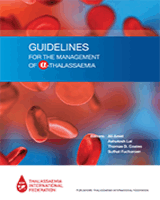From: Chapter 1, EPIDEMIOLOGY, PATHOPHYSIOLOGY AND DIAGNOSIS OF α-THALASSAEMIA

NCBI Bookshelf. A service of the National Library of Medicine, National Institutes of Health.
α-Thalassaemia is characterized by a quantitative reduction or absence of α-globin chain production, or rarely, by the production of abnormal (variant) α-globin chains. α-thalassaemia is one of the most common inherited blood disorders, with approximately 5% of the world’s population being carriers, and around 1,000,000 patients affected by various forms of α-thalassaemia syndromes worldwide [2–4]. The α-thalassaemia is most prevalent in Southeast Asia, Southern China, the Middle East, the Mediterranean Region, and Africa (Figure 3). In certain areas, the carrier frequency can be as high as 80-90% of the population [1]. α-thalassaemia carrier state offers varying degrees of resistance to severe malaria and is believed to have evolved as a genetic adaptation to protect against this parasitic disease [5]. Thalassaemias, including α-thalassaemia, have spread globally due to population migrations, making them a significant global health concern. In regions where the carrier state is common, two clinically significant diseases can arise: HbH disease and Hb Bart’s hydrops foetalis.
![Figure 3. Map showing the worldwide geophraphic distribution of α-thalassaemia carriers, HbH disease and haemoglobin Bart’s hydrops foetalis (reproduced with permission from Piel FB and Weatherall DJ. N Engl J Med. 2014 [13]).](/books/NBK602225/bin/chapter1_f3.gif)
Map showing the worldwide geophraphic distribution of α-thalassaemia carriers, HbH disease and haemoglobin Bart’s hydrops foetalis (reproduced with permission from Piel FB and Weatherall DJ. N Engl J Med. 2014 [13]).
From: Chapter 1, EPIDEMIOLOGY, PATHOPHYSIOLOGY AND DIAGNOSIS OF α-THALASSAEMIA

NCBI Bookshelf. A service of the National Library of Medicine, National Institutes of Health.